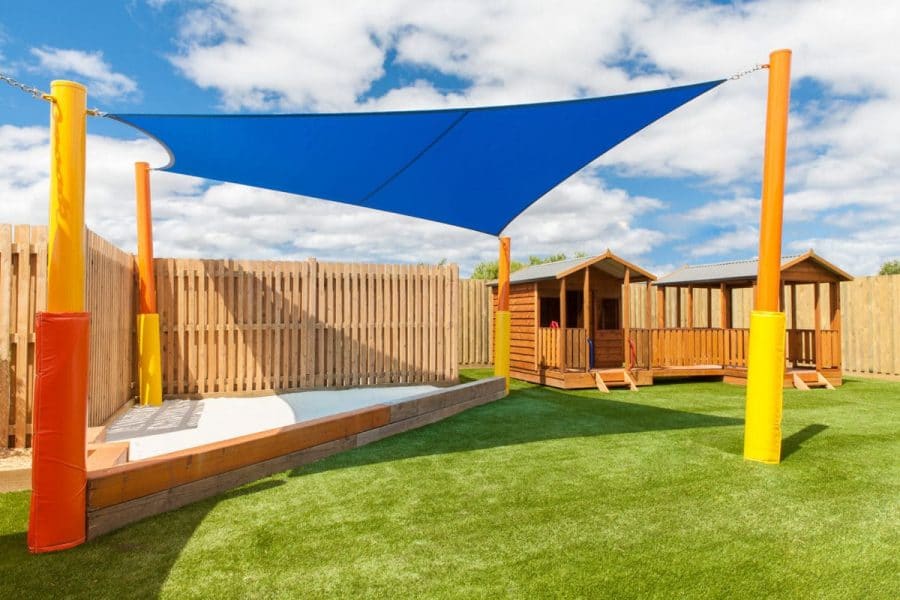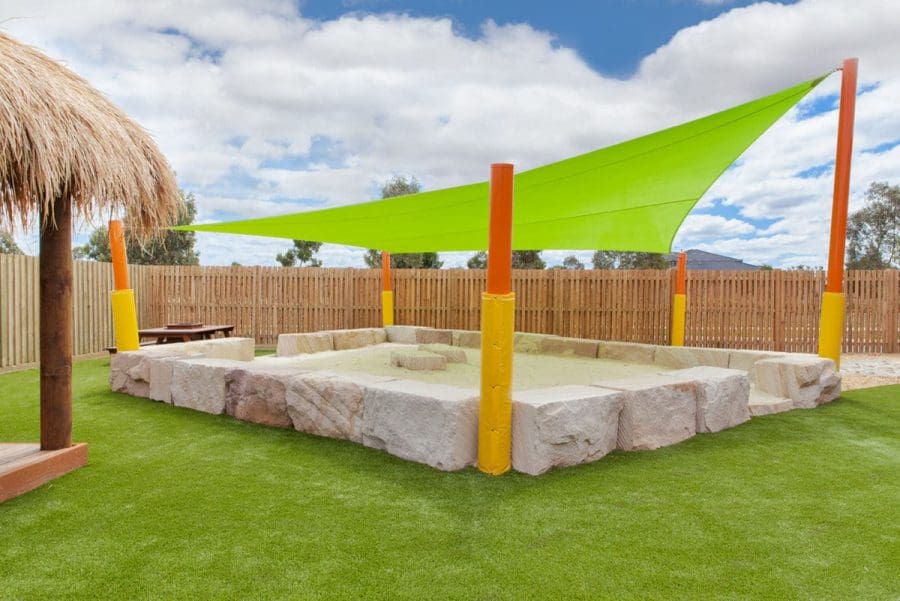We all know that play is important for kids. But did you know how important spending time in a sandpit can be for young kids? It’s a simple way to encourage children to play outdoors while also working on their development and enhancing their skills. A sandpit shouldn’t be overlooked and can be an extremely beneficial play area.
The benefits of sandpit play include:

1. Hand-eye coordination
Playing in the sand pit encourages physical development playing and builds a child’s eye and hand coordination. While in the sandpit, children will undergo activities including digging, pouring sand and scooping. They will also be running around and often squatting while building the sand play. These activities help to build a child’s muscles. Using tools such as plastic shovels and buckets helps to improve hand-eye coordination.
2. Open-ended play
There are several different types of play – one with rules and an end goal and open-ended play. It is important for children to engage in both types of play. Spending time in a sandpit allows children to undertake open-ended play. There are no rules; they are free to create whatever they choose. With open-ended play, there is no right or wrong, no winners or losers. It simply lets the child get creative and express themselves however they want.
3. Encourages imagination
Children can develop and build their imagination by building towns, cities, and castles in the sandpit. Children often get very creative when building in the sand, often not stopping at one structure. Sandpits allow children to build larger structures or even add other materials. Children can make up stories and narratives to go with their sand castles.
4. Builds social skills
If you’re in a public sandpit, or your child has a sibling or friends playing with them, the sandpit offers a great opportunity to build social skills. Playing together in a sandpit offers children the opportunity to develop several social skills. They can negotiate a play space, learn how to share different tools and discuss what they’re building and why. These are all important life skills that children are able to learn.
5. Developing a sense of textures
Playing in the sand is a great way to expose children to new textures. They will get to learn the difference between surfaces such as sand, concrete, grass and wood. Being in the sand will also help children develop their proprioceptive sense – that is, a sense of their body relative to space.
6. Enhances cognitive learning
Playing in the sandpit can teach children important cognitive lessons. They will be able to learn the difference between wet and dry sand, what is needed to make sure a structure stays upright or what happens when you add a moat.






